Oxide
Working methods
CimentArt
Essential tools for application
- Protective tape
- Scissors o cutter
- Sading machine
- Sandpaper grit 40
- Sandpaper grit 150 – 200
- Spatula
- Steel trowel
- CimentArt plastic trowel
- Sponge
- Microfiber roller
- Painting pan
- Electric mixer
- Vacuum cleaner
- Measuring glass or digital scale
Necessary CimentArt products
- CimentArt Primer
- CimentArt Fiberglass mesh
- CimentArt Mixture resin
- Microcement Base CimentArt
- Thin Microcement CimentArt
- Activity CimentArt
- Sealer CimentArt
- Bi-component Polyurethane varnish CIMENTART (Component A and
B)
Before starting
Check the surface where the product would be apply and make sure the surface is:
- Straight
- Stable, motionless
- Dry and without humidity
- Clean
- Free of dust, grease, etc.
Step-by-step application
Place the protective tape where necessary
For the application over completely smooth walls, do only steps 2, 4, 5, 6 and 7.
In the case of application on floors and walls in bad conditions or with tile joints do all the steps.
1. Extend the Fiberglass mesh CimentArt over the surface.

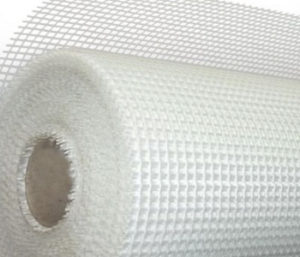
2. Apply a layer of CimentArt Primer with a roller over the fiberglass mesh, exerting some pressure to create adherence on the surface.
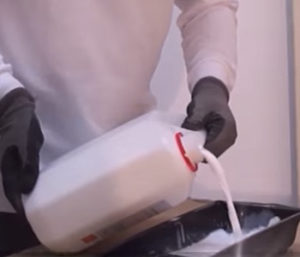
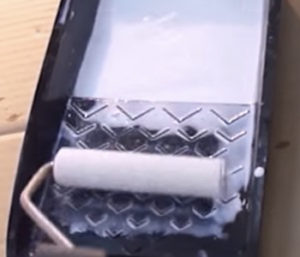
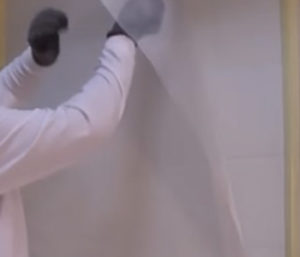
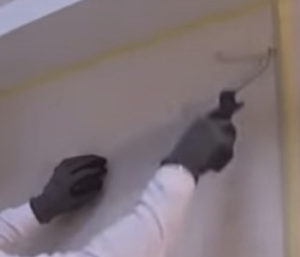
- Clean the Roller and the painting pan with water.
3. Microcement base CimentArt
- Stir energetically the Mixture Resin CimentArt.
- Mixture for floors: 2,5 parts of Microcement powder per 1 part of Mixture Resin CimentArt.
- Mixture for walls: 3 parts of Microcement powder per 1 part of Mixture Resin CimentArt
- The coverage is of 1kg/ m2 for a layer of 1 mm, it is necessary to apply 2 layers. 2kg of Microcement Base is necessary for a surface of 1 m2.
- Mix well with an electric mixer to achieve a smooth mixture.
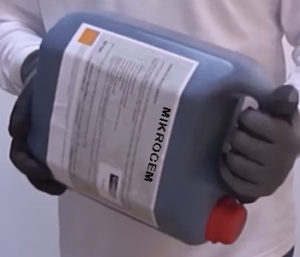


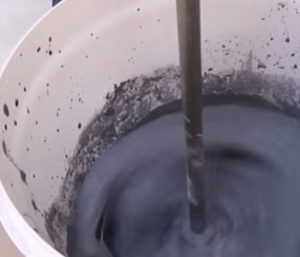
First layer application of Microcement Base:
- With the steel trowel, using an angle of 45° giving a thickness of 1 mm maximum (the thickness is given by the grain of the mixture and by the pressure used during the application).
- Complete the first application making it as homogeneous and without irregularities as possible.
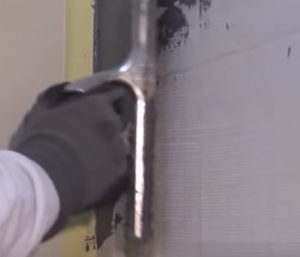
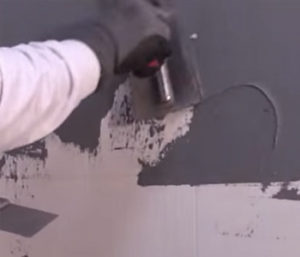
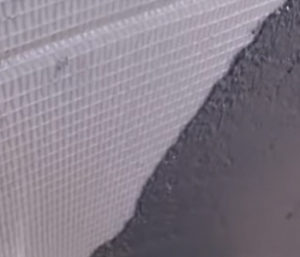
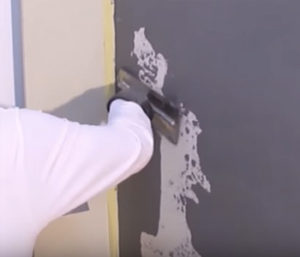
- Remove the protective tape before Microcement hardens.
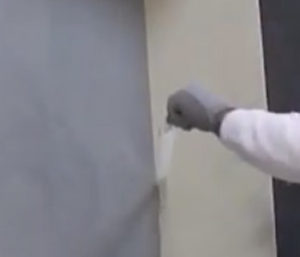
Allow the Microcement Base to dry completely:
- The drying time depends on the humidity, temperature, ventilation, etc.
- Remove with a spatula or with the sandpaper grit 40 any remaining irregularities of the first layer of Microcement Base.
- Remove sanding dust with a vacuum cleaner. A damp cloth can also be used to clean the surface.
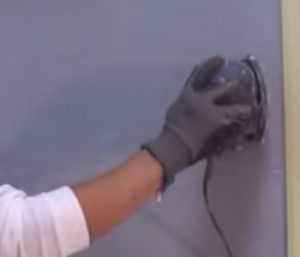
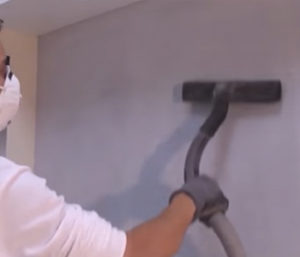
Place the protective tape where necesary.

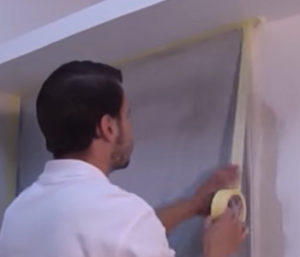
Apply the second Microcement Base layer:
- With the steel trowel, using an angle of 45° giving a thickness of 1 mm maximum (the thickness is given by the grain of the mixture and by the pressure used during the application).
- Complete the second application making it as homogeneous and without irregularities as possible.
- Tip: the first layer as well as the second can be spray with water and slightly pass the steel trowel to correct the irregularities.

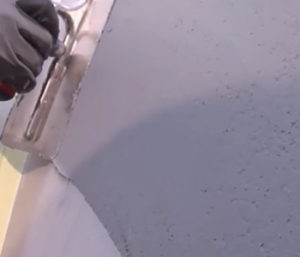
Remove the protective tape before the Microcement hardens and allow the second layer Microcement Base.
- The drying time depends on the humidity, temperature, ventilation, etc.

- Sand well with sandpaper grit 40 the second layer of Microcement Base correcting any irregularities, until the surface is completely smooth.
- Remove sanding dust with a vacuum cleaner. A damp cloth can also be used to clean the surface.
- Place the protective tape where necessary.

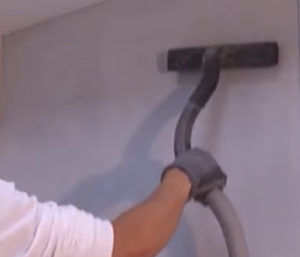

4. Thin microcement CimentArt
- Mix 750 grams of Thin Microcement with half a liter of Mixture Resin CimentArt
- The coverage of this Microcement is of approximately 250 grams / m2 applying the product with a layer of 0,1 mm. it’s necessary to apply 2 layer and between 400 to 500 grams are necessary for a surface of 1m2.
- Mix well with an electric mixer until a smooth mixture is achieve. In addition, let rest for a few minutes on winter (if it is summer this is not necessary).
- Do not mix a big ammount of this product, as it hardens faster than the Microcement Base.

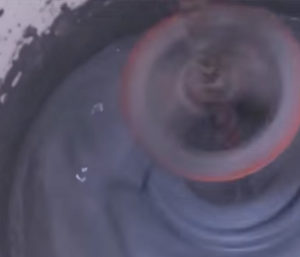
Application of the first layer of Thin Microcement:
- Use our special trowel for Thin Microcement and make the application with short and circular movements, using an angle of 45° giving a thickness of 0,1 mm maximum (the thickness is given by the grain of the mixture and by the pressure used during the application).
- Complete the first application making it as homogeneous and without irregularities as possible.
- Remove the protective tape.
- The drying time depends on the humidity, temperature, ventilation, etc.
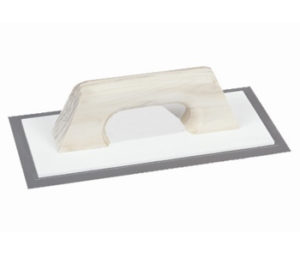



- Sand the first layer of Thin Microcement with sandpaper grit 150-200 correcting any irregularities.
- Remove the sanding dust with a vacuum cleaner.
- Tip: before applying the second layer on high temperature environments, slightly spray the surface with water; this will result in a better application of the product.


Place the protective tape where necessary.
Apply a second layer of Thin Microcement following the same result of the first layer.
- With the trowel for Thin Microcement and make the application with short and circular movements, using an angle of 45° giving a thickness of 0,1 mm maximum (the thickness is given by the grain of the mixture and by the pressure used during the application).
- Complete the second application making it as homogeneous and without irregularities as possible.
- Remove the protective tape and allow the second layer of Thin Microcement to dry.
- The drying time depends on the humidity, temperature, ventilation, etc.
- Tip: For the joints not to be visible, the last layer of Thin Microcement CimentArt is applied in a continuous fashion until the completion.



- Sand the second layer of Thin Microcement with sandpaper grit 150 to 200 correcting any irregularities.
- Remove the sanding dust with a vacuum cleaner. Never use a damp cloth on this phase.


5. ACTIVITY CimentArt
- To obtain the oxide effect, mix a 125 ml bottle of Activity CIMENTART (Oxide activator) with 125 ml of water.

Moist a sponge with the earlier mixture (Activity CimentArt with water) and with short, semicircular movement rub the surface.
This action can also be done using a spray. The application with sponge or the spray must be done in a controlled fashion avoiding dripping in the walls and puddles on the floor.

Let it dry completely to achieve the end result and apply a second layer in the same fashion. If you desire to smooth any area, this action can be repeated more times, either in the whole surface or per areas.
Do not abuse with the Activity CimentArt, the more Activity CimentArt is used, the more the cement gets burned and oxide (normally it gets darker with each application) and the process can not be reverted.
After 24 hours applying the last coat of Activity, with a dry cloth or absorbent paper, you have to rub the entire surface to remove the excess (Activity in excess is always there).

6. Sealer CimentArt
- Place the protective tape where necessary.

Pour into a painting pan the sealer CimentArt and apply a uniform layer with a shorthaired roller or a microfiber roller.
- The coverage of the CIMENTART Sealer is of 100 gr /m2 for each layer.
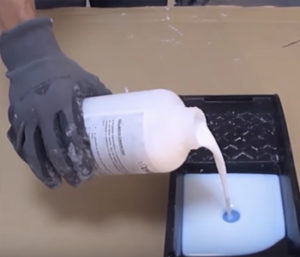
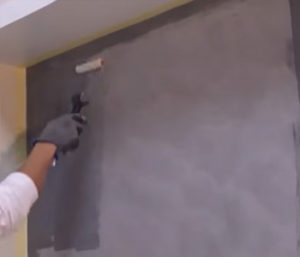
Clean the Roller and the painting pan with water.
- Allow the sealer CimentArt to dry completely. The drying time depends on the humidity, temperature, ventilation, etc. It often dries really fast.
7. Bi-Component Polyurethane water base varnish CimentArt
For the complete finishing of front walls, floors, showers and/or any other surfaces that could be in contact with water, use Bi- component varnish CimentArt.
Preparation:
- Mix 2 parts of the Component A of the Polyurethane Varnish HARD CIMENTART Solvent Base with 1 part of component B.
- To make 1 kg of Vanish HARD with the two components 666 gr of component A and 333 gr of component B are necessary.
- The approximate coverage is of 100 gr/1m2, applying a thin layer of 0, 1 mm. it is always necessary to apply 2 layers. To complete a surface of 10 m2 with one layer 1kg of the mixture is necessary
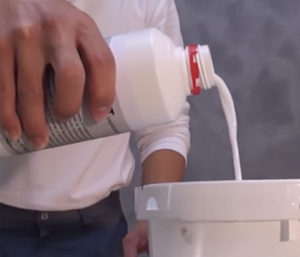
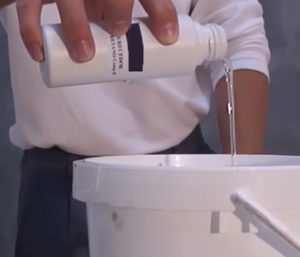
- Using a microfiber roller or a spray apply a first layer of varnish, 0,1mm of thickness (tipping off the surface when using the roller) and let dry at least 12 hrs.
- Using microfiber roller or a spray apply the second layer in the same fashion of the first one.
- A third layer can be apply for more protection, mainly on those areas exposed to water like showers or outdoor terraces.
- Do not forget to clean the roller and the painting pan with water.
Important
- It is important to stir energetically the Mixture Resin before mixing it with the Microcement powder. Otherwise, color stains may appear on the surface.
- Traditional Microcement can be use on any surface with the exception of pools, parkings and factories with heavy machines traffic.
- Never use Microcement Base with layers over 1mm of thickness.
- Never use Thin Microcement with layers over 0.1 mm of thickness.
- If while mixing the Resin with the Microcement powder, the mixture is too liquid, let it rest for a few minutes until the desired consistency is achieved. This can occur on low temperatures on winter and /or with intense colors resin.
- Use the Varnish of Polyurethane HARD CIMENTART always with thin layers of 0,1mm.
- Make sure all the Microcement surface is cover with the Polyurethane Varnish.
- The traditional Microcement CimentArt can be use without any problems on showers and areas constantly exposed to water. However, for this type of surfaces the use of gama AQUA, ready to use and 100% waterproof on all its layers is recommended.
For any technical guidance write to: contacto@grupocimentart.com